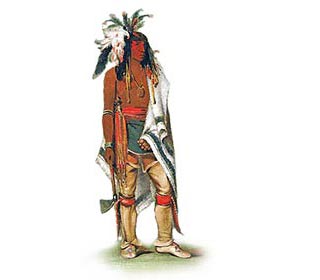The Iroquois Confederacy Constitution was also known as the "League of Peace and Power". Deganawida and Hiawatha brought about an alliance of the Iroquois tribes by bringing a message, known as the Gayanashagowa or the Great Law of Peace, to the warring Iroquoian nations. The Great Law of Peace was the basis of the Iroquois Confederacy Constitution. The Great Law of Peace or the Iroquois Confederacy Constitution is divided into 117 articles. Iroquois Confederacy Constitution
Read about the History and Founding of the Iroquois Confederacy and discover interesting facts and information about the founders Deganawida the Great Peacemaker and his spokesman Hiawatha, the tribes of the league, where they were located with a map for reference, the People of the Longhouse, the Hiawatha Wampum Belt, the Tree of Peace, Great Law of Peace and the Great Council. Full Text of the Iroquois Confederacy Constitution
The Constitution contained details of the organization, and function of the Iroquois League. The Constitution covered subjects including the Role of the Great Council, Council membership, Eligibility and Resignation, Candidates, Election of Pine Tree Chiefs, Names, Duties and Rights of War Chiefs, Women, Clans and Consanguinity, Official Symbolism, Wampum, Laws of Adoption, Laws of Emigration, Rights of Foreign Nations, Rights and Powers of War, Treason or Secession of a Nation, Rights of the People of the Five Nations, Religious Ceremonies Protected, Protection of the House and Funeral Addresses. The full text of the 117 Articles of the Iroquois Confederacy Constitution can be accessed via the following links: |
